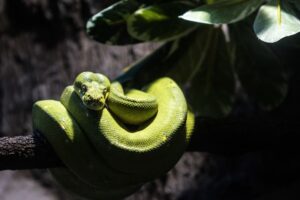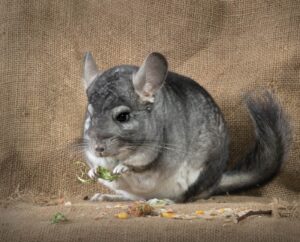Table of Contents
ToggleIntroduction
With their captivating black masks, Raccoons are one of nature’s enduring mysteries. These elusive mammals have been admired and misunderstood throughout history, with their distinctive facial features earning them the nickname “masked bandits.” But what purpose does this enigmatic mask serve? Journey to uncover the secrets behind raccoons’ iconic masks, delving into the evolutionary, ecological, and behavioral facets that have sculpted this striking feature.
Why Do Raccoons Have A Mask? By unmasking the reasons behind the mask, we gain a deeper appreciation for the remarkable adaptability of these intelligent creatures and the intricate ways they navigate a world full of challenges and opportunities.
Habitat And Range
To get a better sense of what raccoon masks mean, we need to look at the different places they live. Raccoons are highly adaptable, spanning from North America to Central America. They frequent various environments, from woods and wetlands to cities. Their masks contribute to their success in these different settings.
Forest Dwellers
In their natural habitats, raccoons can be found in deciduous and mixed forests. Using their climbing and swimming abilities to their advantage. The masks help them blend into the shadowy undergrowth of the forest floor, making them less conspicuous to predators and prey alike. Their nocturnal behavior and masked faces allow them to navigate the dense vegetation and hunt for food in the dark.
Urban Opportunists
Raccoons’ extraordinary adaptability makes them an intriguing urban animal. The masks that once helped them blend into the forests now serve a different purpose in cities and suburbs. Raccoons’ masks make them less recognizable and potentially less intimidating to humans, allowing them to scavenge for food in residential areas without attracting too much attention.
Raccoons in cities often dig through trash cans, eat from pet food bowls, and even build nests in attics. Their mask-like look and ability to adapt have helped them live with humans very well, even if it does cause some problems from time to time.
Wetland Wanderers
In wetland areas, raccoons feed on aquatic animals, such as crayfish and fish. Their masks can help them while hunting by reducing glare and enhancing their underwater vision. This feature makes them well-suited to wetland ecosystems, and their adaptability allows them to exploit a wide range of resources, from aquatic to terrestrial.
Why Do Raccoons Have Masks?
Due to this furry animal being blamed for the damage, theft, and the spread of disease, you might think that raccoons would wear masks to avoid being caught in a police picture. And after all, the damage they caused could be seen as breaking the law.
But one idea is that the black fur under the raccoon’s eyes blocks out light and makes it easier for the nocturnal raccoon to see at night. There’s also the idea that the different patterns on each animal’s mask help them tell each other apart. No one agrees on why raccoons wear masks, but everyone agrees that they can bother people who live in their homes.
The Evolution Of The Mask
The raccoon is in the same family as coatis, kinkajous, and olingos, for which the name “Procyonidae.” All these animals have some marks on their faces, but raccoons are the clearest. It is thought that natural selection caused the mask to develop because raccoons with masks had a better chance of surviving and having babies than raccoons without masks. The mask may have helped the squirrels in more than one way:
It helped them talk to each other.
Raccoons live in groups called bands because they like to be with other animals. They talk to each other through sounds, body language, and facial movements. The mask helped them make their feelings and goals clearer.
It helped them blend in.
Raccoons are omnivores, which means they eat everything. They like nuts, fruits, insects, mice, eggs, and trash. They often go into human areas to find food, which puts them in danger from hunters, dogs, cars, and traps. The mask might have helped them fit in with their surroundings and stay hidden.
It helped them find each other.
Raccoons are unique individuals with their tastes and habits. They can tell their band members and other rats they know by how they look, smell, and sound. The mask might have helped them tell each other apart from strangers and possible enemies.
Recognizing each person.
It is very social for raccoons, and they show a lot of different social habits in their groups. One interesting theory says that the different patterns on each raccoon’s mask help them be recognized. Raccoons may use the unique markings around their eyes to tell each other apart, just like people use facial features to tell each other apart. This understanding makes it easier for raccoons to talk to each other, work together, and plan activities.
The Hidden Benefits Of The Mask
Raccoons’ masks have multifaceted advantages beyond camouflage and night vision—some of the lesser-known benefits of this distinctive facial feature.
Temperature Regulation: The mask’s dark color can help foxes keep their body temperature stable. Black fur absorbs more heat from the sun than lighter colors. Raccoons can absorb heat more effectively because they have more dark fur around their eyes and nose. This change can be very helpful during the winter when raccoons need to keep warm and store heat.
Protection from UV Radiation: The black mask might protect from ultraviolet (UV) radiation, which can harm the eyes and skin. By having a concentrated dark area around their eyes, raccoons may be better equipped to withstand UV exposure. This safety is especially helpful for them when they are less likely to be in the sun at night.
Reduced Glare During Rain: Besides their roles in nocturnal activities, raccoons’ masks can be useful during rainy weather. The dark coloration can help reduce the glare from raindrops on their fur, allowing them to maintain better visibility in wet conditions. This adaptation aids their foraging and navigation even when the weather is less than ideal.
Conclusion
Raccoon masks, with their distinctive black coloration around the eyes and snout, are a testament to the adaptability and resilience of these remarkable creatures. These masks have evolved over millions of years, enabling raccoons to thrive in various environments, from forests and wetlands to urban areas. The masks offer camouflage, improved night vision, and non-verbal communication within their social groups.







